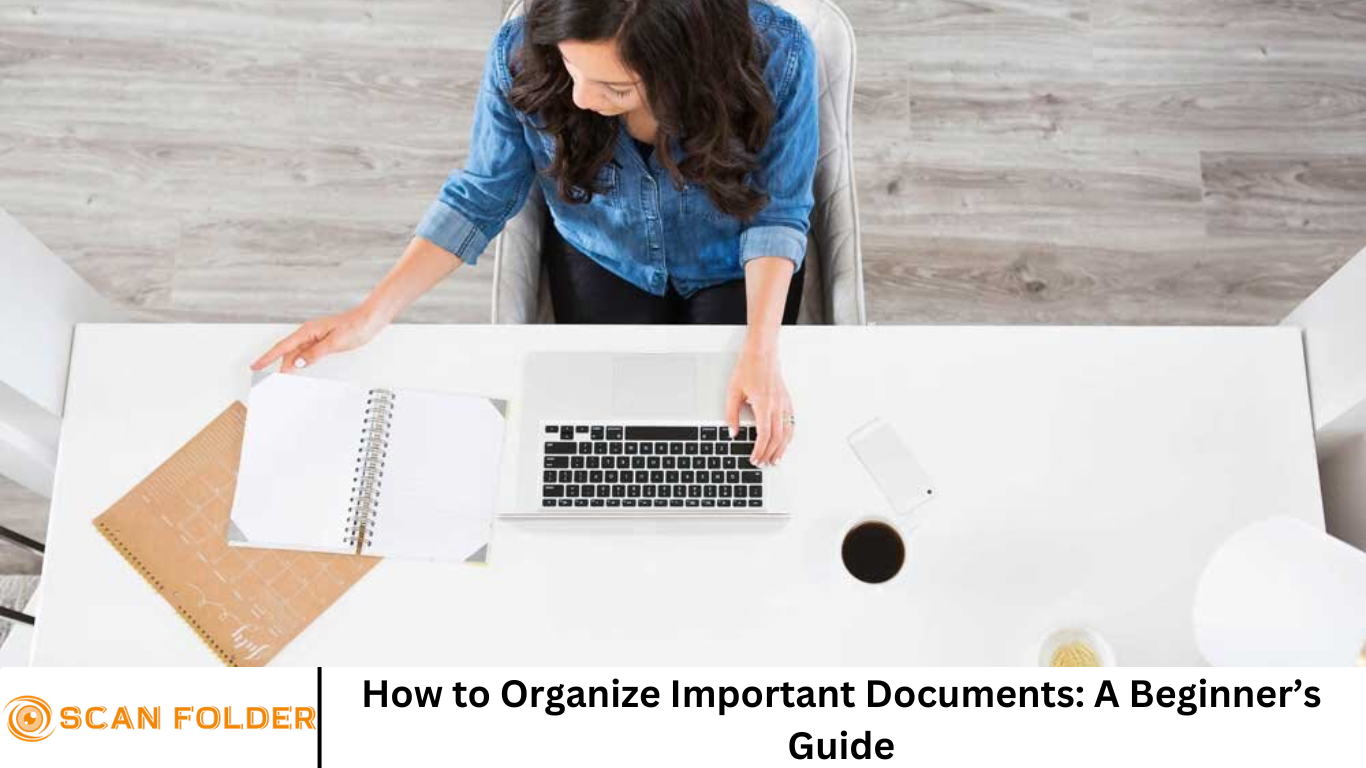Organizing important documents is one of the most overlooked tasks in home and office management. Yet, it’s one of the most crucial. Whether it’s financial records, legal paperwork, medical files, or personal keepsakes, having a reliable system in place can save time, reduce stress, and ensure peace of mind.
In this beginner’s guide, we’ll walk you through step-by-step how to organize your important documents so you can find what you need when you need it—and help others do the same if necessary.
More Read: Top 10 File Management Tips for Better Organization and Security
Why Organizing Documents Matters
Before we dive into the “how,” let’s address the “why.”
1. Efficiency and Accessibility
When your documents are well-organized, finding tax returns, medical history, insurance policies, or home records becomes quick and painless.
2. Emergency Preparedness
In case of emergencies like natural disasters, sudden illness, or death, having your documents in order makes it easier for family members or legal representatives to act on your behalf.
3. Financial Clarity
An organized financial record-keeping system helps you stay on top of bills, savings, investments, and tax responsibilities.
4. Stress Reduction
Clutter—especially paper clutter—can contribute to mental stress. Reducing that chaos helps you think more clearly and feel more in control.
Step 1: Gather All Your Documents
Start by collecting all physical and digital documents in one place. Look through drawers, mail stacks, filing cabinets, old folders, and digital storage.
Categories to Consider:
- Personal identification (birth certificates, Social Security cards, passports)
- Financial documents (bank statements, credit card records, loan documents)
- Legal paperwork (wills, power of attorney, contracts)
- Medical records (insurance, history, prescriptions)
- Home and property (mortgage, deed, lease, utility bills)
- Tax documents (returns, receipts, W-2s, 1099s)
- Vehicle records (titles, registration, insurance)
Step 2: Sort and Purge
Once you have everything together, begin sorting into categories. Use labeled folders or piles on a large surface.
Ask These Questions:
- Is this document still valid or current?
- Is this something I need to keep for legal or tax purposes?
- Can this be digitized and stored electronically?
Tip: Use a shredder for documents with sensitive information that you no longer need.
Step 3: Decide on Storage Solutions
1. Physical Storage Options
- Filing Cabinet: Ideal for homes with space and multiple types of documents.
- Portable File Box: Great for smaller collections and easy mobility.
- Accordion File Folder: Simple and compact, ideal for minimal paperwork.
- Fireproof Safe: Recommended for storing irreplaceable items like passports, wills, and birth certificates.
2. Digital Storage Options
- Cloud Storage Services: Google Drive, Dropbox, iCloud
- External Hard Drive: Good for large document collections or sensitive files
- Document Scanning Apps: Adobe Scan, CamScanner, or your phone’s native scanner
Pro Tip: Always back up digital files and use strong passwords for cloud storage.
Step 4: Create a Filing System
Your system should be intuitive and easy to maintain. Choose between alphabetical, chronological, or categorical systems—whichever makes the most sense for your needs.
Suggested Categories:
- Personal
- Financial
- Legal
- Medical
- Property/Home
- Taxes
- Miscellaneous
Label Clearly using color-coded tabs or printed labels for easier navigation.
Step 5: Go Paperless (When Possible)
Going digital not only saves space but also makes searching and sharing documents easier.
Benefits of a Paperless System:
- Reduces clutter
- Easier access on-the-go
- Environmentally friendly
- Automated backup options
How to Start:
- Scan all new incoming documents
- Convert older files during your organizing process
- Sign up for e-statements and digital billing
Caution: For certain original documents like wills, birth certificates, and titles, always keep the hard copies in a secure location.
Step 6: Maintain Your System
Organization is not a one-time task—it requires upkeep.
Monthly:
- File new documents
- Shred outdated paperwork
Annually:
- Review and update folders
- Archive old but necessary documents
- Backup digital files
Reminder: Set calendar reminders to stay on track.
Step 7: Create a Document Locator List
This is a master list that details where each category of document is stored—both physically and digitally.
Include:
- Folder names
- File locations (e.g., “Google Drive > Taxes > 2024”)
- Passwords (store securely in a password manager)
- Emergency contact details
Bonus: Share this list with a trusted person like a spouse, adult child, or legal representative.
Common Mistakes to Avoid
- Holding on to everything “just in case”: Leads to clutter. Use guidelines for retention.
- Not backing up digital files: Risk of loss if devices fail.
- No system at all: If it takes more than a few minutes to find something, it’s time to reevaluate.
Retention Guidelines (General Recommendations)
| Document Type | How Long to Keep |
|---|---|
| Tax returns | 7 years |
| Pay stubs | 1 year (until W-2) |
| Bank statements | 1 year |
| Medical records | Indefinitely |
| Property records | As long as owned + 7 years |
| Wills and legal docs | Indefinitely |
| Insurance policies | Until updated or canceled |
Frequently Asked Question
What are the most important documents I should organize first?
Start with essential documents like birth certificates, passports, Social Security cards, wills, insurance policies, tax returns, and property records. These are often needed for legal or emergency situations.
How do I know what documents to keep and what to throw away?
Follow general retention guidelines: keep tax returns for 7 years, property records as long as you own the asset (plus 7 years), and legal documents indefinitely. Shred anything expired or irrelevant that contains sensitive information.
Is it safe to store documents digitally?
Yes, as long as you use reputable cloud storage services and strong passwords. Consider using two-factor authentication and backing up files on an external hard drive for extra security.
How often should I update my filing system?
Do monthly check-ins to file new papers and an annual review to archive or purge outdated documents. Set calendar reminders to stay consistent.
What should I do with original legal documents like wills or titles?
Keep original documents in a fireproof safe or a secure filing cabinet. Only digitize copies for convenience; originals should remain intact and easily accessible.
How can I organize documents if I have limited space?
Use a portable file box, accordion folders, or go mostly paperless by scanning and storing files digitally. Prioritize essential hard copies for physical storage.
What is a Document Locator List and why do I need one?
A Document Locator List is a master list of where your documents are stored (both physical and digital). It helps you and your loved ones quickly find critical paperwork in emergencies or major life events.
Conclusion
Organizing important documents might feel overwhelming at first, but breaking it down into steps makes the process manageable and even empowering. It’s about creating a system that supports your life, saves you time, and gives you peace of mind knowing everything is in order. Whether you start small with one category or go all-in with a full reorganization, the most important thing is to start. Over time, your organized system will become second nature—and future-you will thank you for it.


